We often hear experts say how important it is to maintain humidity levels in our homes, as dry air can cause difficulty in breathing and create a number of different health problems. Also, too much humidity can also lead to serious health problems including allergy problems, growth and inhalation of mold and mildew, and discoloration of your home’s walls.
What you need is a good quality dehumidifier if your home or certain rooms are affected by moisture or dampness. But before investing in one, it is important to determine how large or small a unit you require. Not only are there different brands and varieties to choose from, they also differ in size and capacity.
In this article, we will list the important qualities in a dehumidifier and help you learn how to choose the right size for your room. In the end, we also provide a review of our favorite dehumidifiers to help you choose the one best for you.
How Dehumidifiers Are Sized
Here are some popular dehumidifier sizes you might find on the market:
30-Pint Dehumidifiers
With an ability to collect about 30 pints of water per day, this size is suitable for areas between 500 and 3,000 square feet, depending on the level of humidity. This dehumidifier is effective for areas between 500 and 1,500 square feet in areas where the relative humidity level is more than 85%. It serves well for areas up to 2,000 and 3,000 square feet in 60%-70% and 50%-60% relative humidity, respectively.
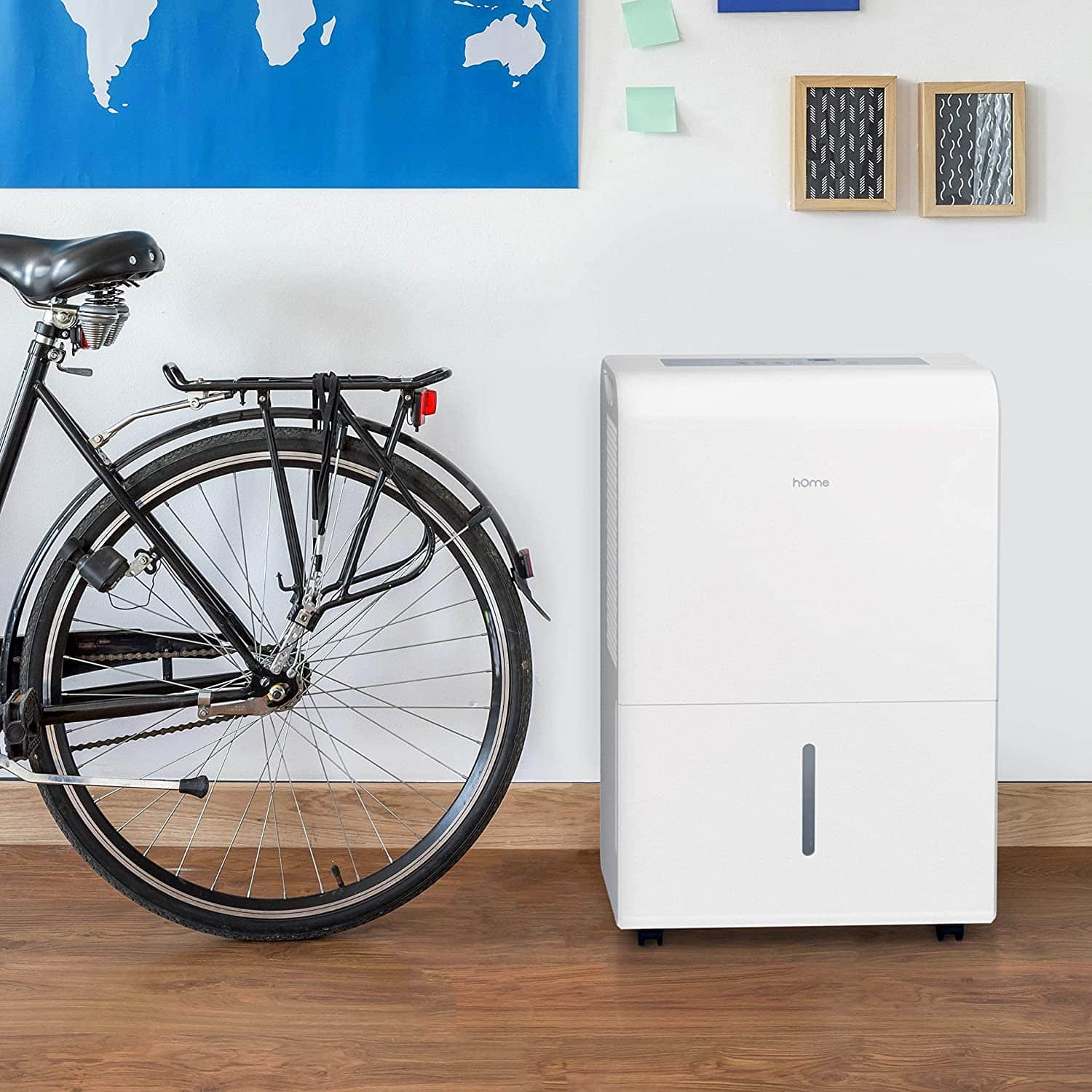
hOmeLabs HME020031N
50-Pint Dehumidifiers
These dehumidifiers are suitable for extremely humid mid-sized areas, or large areas with less humidity, with a constant musty and damp smell. This dehumidifier is too big for areas less than 1,500 square feet unless they have more than 85% relative humidity. These devices can also serve areas of up to 3,000 square feet with a relative humidity range between 70% and 85%.
70-Pint Dehumidifiers
These are the best dehumidifiers for large areas – such as homes or commercial buildings with a crawl space - with extremely humid conditions. They’re too big for areas less than 2,000 square feet, but they’re great for spaces between 2,500 and 3,000 square feet with a relative humidity of more than 85%.
Consider independent room sizes when choosing the size of a device if you have more than one area to dehumidify.
Dehumidifier Size Calculator
Use the calculator below to find the estimated correct size in pints for your dehumidifier:
What Size Dehumidifier Do I Need?
A dehumidifier is an essential household appliance. However, finding the right size and quality might be challenging. There are many dehumidifier brands on the market today. Here, we’ll outline some of the best.
How Do These Relate When Sizing a Dehumidifier?
The right dehumidifier depends on various factors, including an area’s square footage and if you’re using it for a damp room. Here are some essential factors you should consider when choosing a dehumidifier:
Room Size vs Room Conditions
Room size- Dehumidifiers with a higher capacity than the room’s size leads to excess energy costs. Similarly, dehumidifiers are inefficient if installed in rooms larger than their capacity.
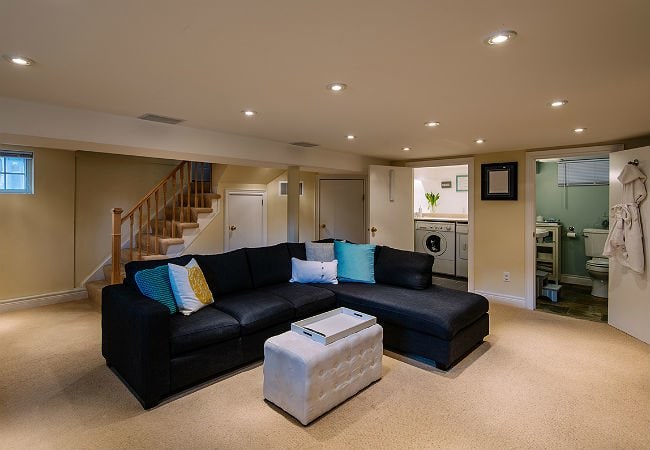


Photo credit: bobvila.com
Room conditions- An effective installation can depend on the amount of moisture in the room and the general working environment of the dehumidifier. For example, leaks might be seen on the walls at a high relative humidity level. You can select up to a 70-pint dehumidifier depending on these levels.
Dehumidifier Pints vs Room Size
Dehumidifier pints- This refers to the amount of moisture a dehumidifier can hold at maximum capacity. The larger the room size, the higher the amount of moisture collected. This explains why you need higher pint dehumidifiers for large rooms.
Additional Aspects to Consider
Other aspects to consider when sizing a dehumidifier include:
- Number of occupants - Human beings release water to the atmosphere whenever they breathe or talk. Consider a dehumidifier with a larger capacity if an area is occupied by many people.
- Washer and dryer - A dehumidifier with a larger capacity is great for a laundry room, where water is constantly flowing and contributing to an increase in air moisture.
- Number and location of doors and windows - Open windows and doors let in one-way moisture. Consider a bigger dehumidifier with one-way moisture if you want a device for an area where doors and windows are constantly open.
- Bathroom - Your bathroom’s location is critical in determining the size of a dehumidifier for your house. Running showers and flushing toilets contribute significant amounts of moisture to the air.
- Cost of the dehumidifier - Your dehumidifier should be affordable. Consider leasing if you need a large but expensive device.
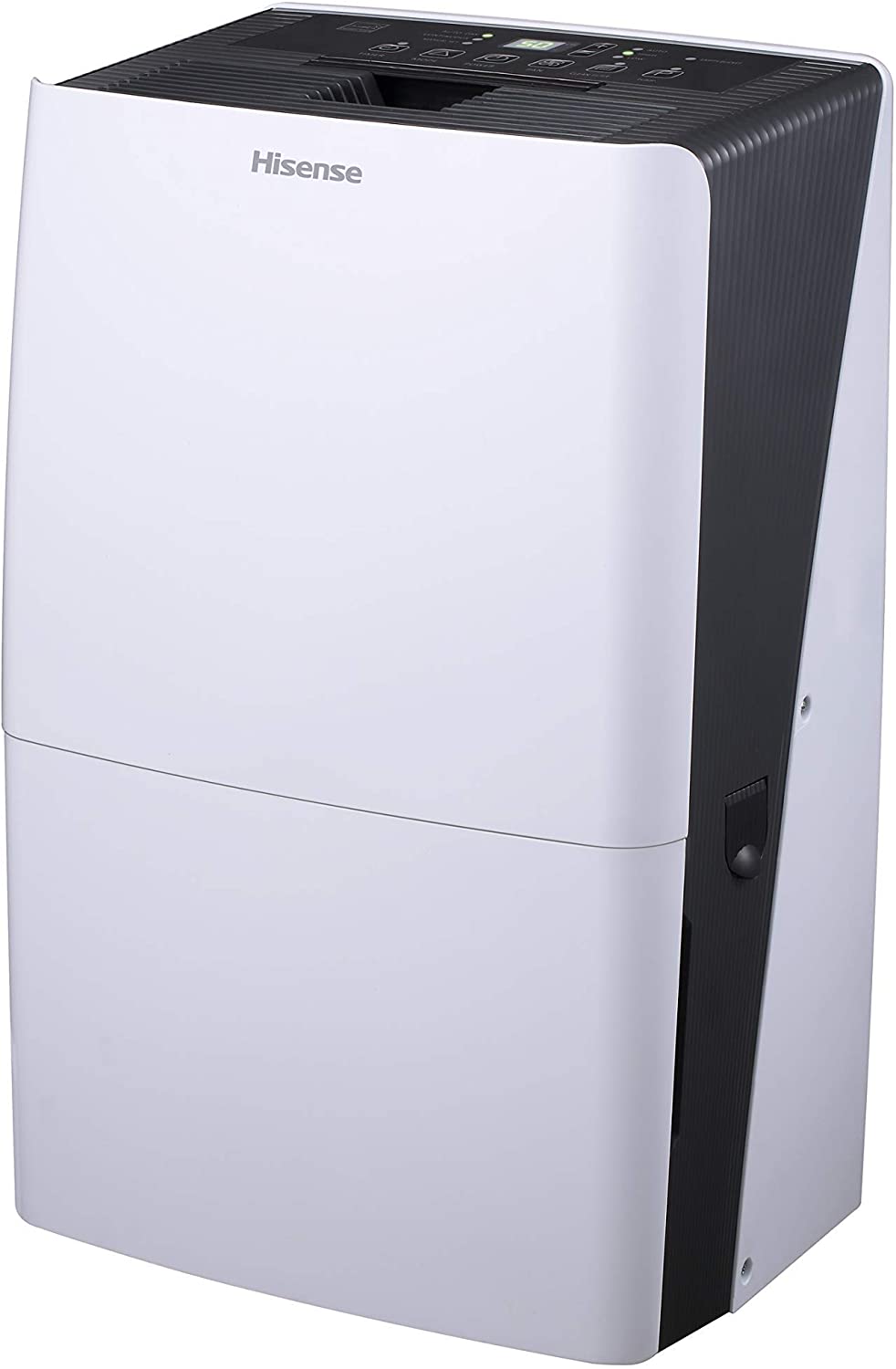


Hisense DH-7019KP1WG
How to Choose the Correct Size of Dehumidifier
The size of a dehumidifier does not mean its weight or how tall it is but how many pints of water it is able to pull from the air in one day. Dehumidifiers able to remove more moisture in one day tend to be larger in size and take up more space, while smaller units remove less moisture. However, when we talk about the size, we are referring to how much work it can do. There are several factors that determine the right size for your room:
Pint Capacity of a Dehumidifier
Pint capacity is the amount of moisture a dehumidifier is able to remove from an area within a 24-hour period. A dehumidifier’s performance is greatly affected by both the size and humidity level of a particular area. Usually, a dehumidifier with a pint capacity of 70 or less is best for residential use, while those over 70 pints are perfect for industrial or commercial use.
Size of the Room
Measure the area where you want to operate the dehumidifier. To find out the size of your room in square feet, use a tape measure. Measure the length and width of a room and multiply them. For example, a room that is 50 feet long and 30 feet wide has a total of 1500 square feet (50 x 30 = 1500).
30-Pint Dehumidifier - This is the size considered ideal for areas up to 1500 square feet irrespective of how damp the area is. Thus, these dehumidifiers are appropriate for most residential basements. However, they are also recommended for areas up to 2000 square feet, given that they are not more than moderately damp. These are areas that feel damp and smell slightly musty when the weather is humid, but not all the time.
40 or 50-Pint Dehumidifier - This size of dehumidifier is recommended for areas up to 2000 square feet that smell musty and feel damp all the time. These are places where you have experienced mold growth in the past or where moisture is visible on the walls.



Photo Credit: HouseWeather.com
60 or 70-Pint Dehumidifier - Recommended for spaces larger than 2000 square feet, these dehumidifiers are for extremely wet spaces where there is standing water on the floor.
Most dehumidifiers are designed with a bucket that collects water and has to be emptied periodically, while there are some models that drain water automatically. These models are best for basements, as floor drains are usually already installed.
Although large dehumidifiers are more expensive, you can save money in the long run by choosing a unit with a higher capacity than needed. A larger capacity unit will not have to work as hard to keep the room dry as a dehumidifier that is recommended according to the size of the room.
Number of People and Pets
Animals and humans expel water through various crevices on their bodies. We can increase the level of humidity of a room, albeit very slightly, just by sneezing, talking, coughing, breathing, and wheezing. For every four to five people you should add five pints to your calculations.
Bathrooms
Bathrooms attract bacteria and mold more than any other room. Washing your hands, running steamy showers, and flushing the toilet all increase the RH level of your bathroom. For a bathroom dehumidifier, it is best to add five to ten pints to your calculations.
Choose a Desiccant Dehumidifier for a Cooler Environment
There are two basic types of dehumidifiers: desiccant and refrigerant. Although desiccant dehumidifiers have lower capacity ratings, they are more efficient in lower temperatures than refrigerant dehumidifiers. Therefore, it is best to use such units where temperatures fall below 65 degrees Fahrenheit (18 degrees Celsius). Also, desiccant dehumidifiers are quieter than refrigerant models.
Pick a Refrigerant Dehumidifier for a Hot and Humid Space
If you experience very hot and humid temperatures, a refrigerant dehumidifier will best suit your needs. They have a higher capacity rating and are more suited to higher temperatures due to their efficiency.
If you operate your refrigerant dehumidifier in temperatures below 65 degrees Fahrenheit, frost may form on the evaporator coils, thus disrupting the proper functioning of this unit.
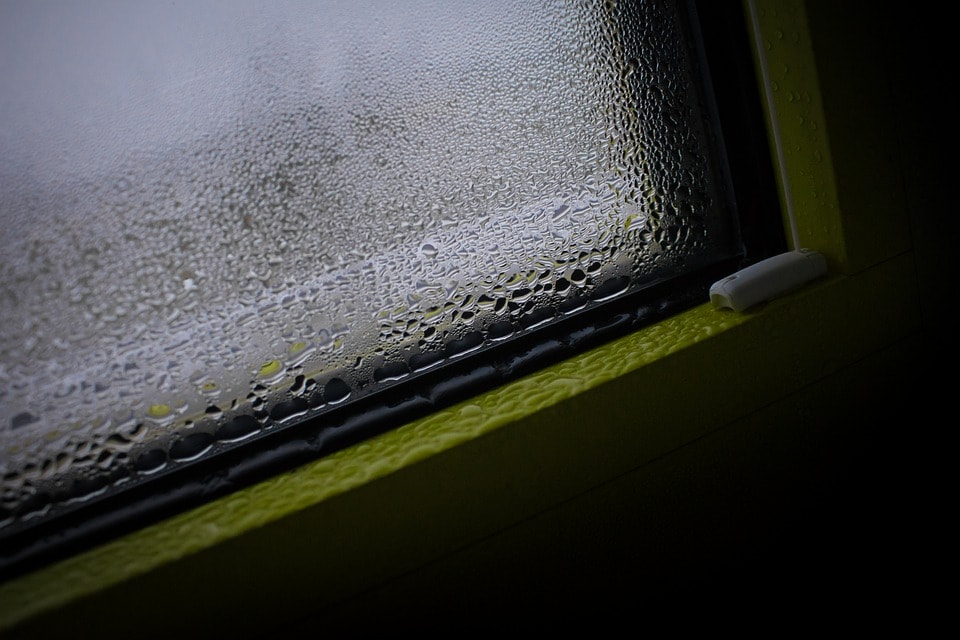


What Makes a Good Dehumidifier?
Several factors can determine a dehumidifier’s quality. These attributes, which vary between different products, include:
Functionality
Dehumidifiers reduce and maintain the air’s humidity level by removing excess moisture. A good humidifier should be able to decrease a room’s moisture level without regular breakdowns.
Durability
A dehumidifier must last long enough without breaking down. Its durability will determine your future maintenance expenses.
Aesthetics
A dehumidifier also needs to look good for installation inside a residential or commercial building. Its appearance could determine if it’s used in a basement, crawl space, or living room.
Types of Dehumidifiers
Dehumidifiers can be classified into four types according to the way they work. Most of these dehumidifiers range from 15 to 60 pints and maintain 60% relative humidity level.
Heat Pump Dehumidifier
This pump uses a fan, heat exchange coils, and a heat pump to eliminate moisture. The heat pump draws indoor air through the heat exchange coil and the fan. Usually, the coil is at a freezing temperature. However, if collected moisture condenses, it is reheated by another heat coil and then dispersed into space again.
Dehumidifying Ventilators
These dehumidifiers are considered perfect air appliances for attics, basements, and some crawlspaces. They have an exhaust fan and a sensor which work together to create appropriate humidity levels.
Chemical Absorbent Dehumidifiers
These dehumidifiers consist of desiccant-type silica gel and absorbents. This heats the gel and fixes it to a wheel while a separate loop helps to keep the loop dry. The humid air is then expelled via an external vent.
Homemade Dehumidifiers
These simple dehumidifiers can be made with the help of de-icing salt as it works to extract dampness from the air. This water then collects in a bucket placed below. However, it is essential to replace the salt regularly to maintain its effectiveness.
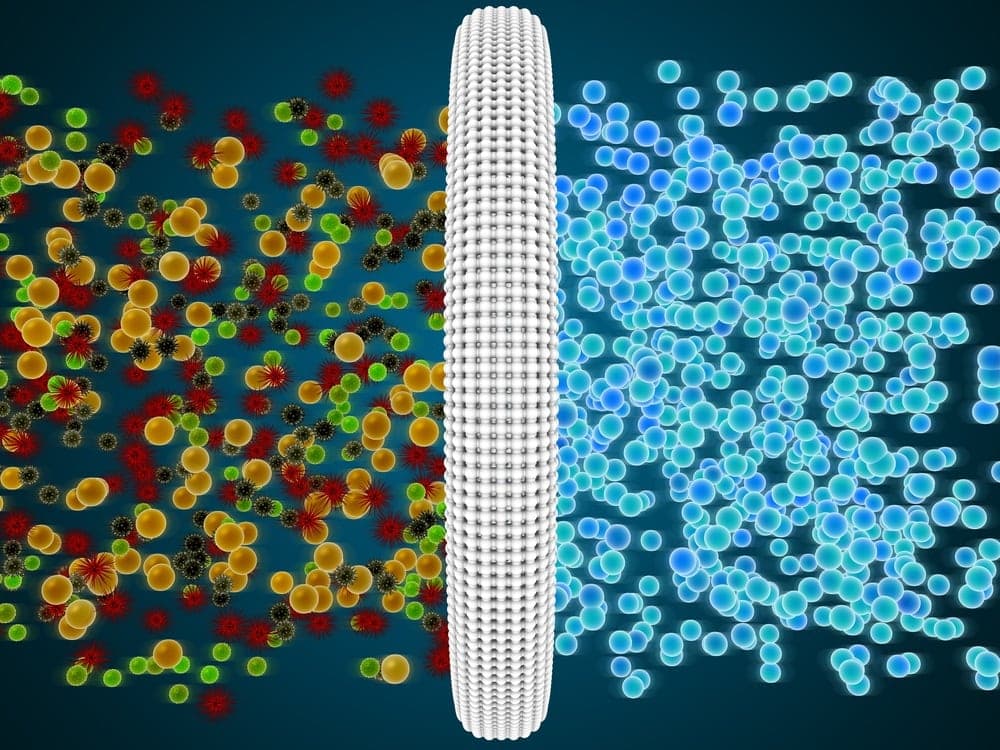


Photo credit: goodairgeeks.com
Conclusion
A dehumidifier is a great device that gets rid of the moisture in the air around you and safeguards your clothes and electrical appliances against moisture damage. It helps create a healthy environment for people with breathing allergies and problems.
However, it is essential to get the right size dehumidifier so that you can get the maximum benefit from it. Make sure that you take the above-mentioned considerations into account while calculating the size of the dehumidifier that will be perfect for your living space.
People Also Ask
Here are our answers to some commonly asked questions regarding dehumidifier sizes for your home.
How Many Square Feet is a 20 X 20 Room?
A 20 X 20 room is 400 hundred square feet.
Can a Dehumidifier Be Too Big?
Dehumidifiers are manufactured to serve certain areas. They can be too big if the minimum area allowed exceeds the area in question.
What Happens if My Dehumidifier is Too Small?
You might not achieve the intended relative humidity levels. It could also break down.
How Many Square Feet Does a 70 Pint Dehumidifier Cover?
A 70-pint dehumidifier serves areas between 2,000 and 3,000 square feet.
What Are the Department of Energy Dehumidifier Sizing Standards?
Dehumidifier sizing standards according to the Department of Energy are 30, 50, and 70 pints.
